Do you own an orchid, but struggle caring for it?
Do you want bigger and better blooms every year from your orchid?
Or did you make your first orchid purchase and want to learn EASY & PROVEN caring tips?
Caring for Orchids may seem like a time-consuming and challenging process. But learning how to care and grow orchids is easy.
They just require different care than a traditional potted plant.
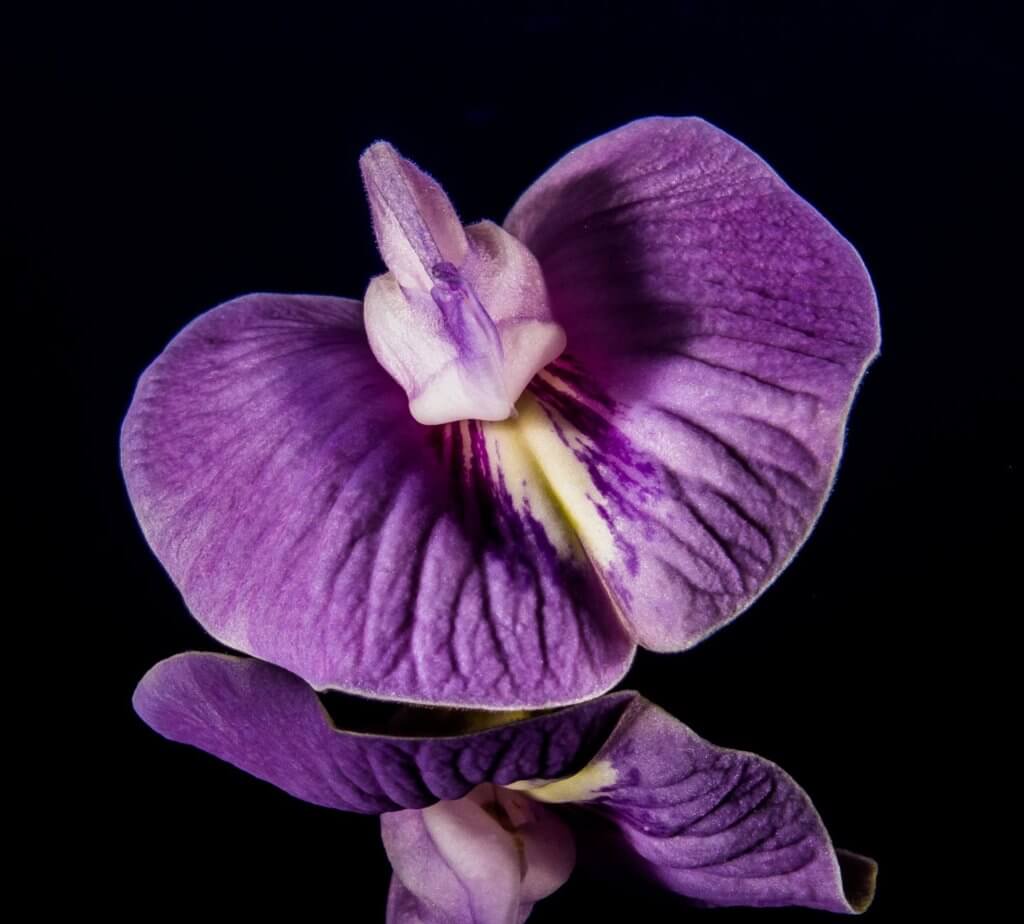
After much research, trial-and-error, and working with local orchid farms, I have created How to Care for Orchids: 10 EASY & PROVEN Tips.
If you follow these 10 EASY & PROVEN tips, you will find caring for the ten most popular orchids is easier, quicker, and more enjoyable.
Most importantly, you will have bigger, better, and longer blooms!
7 Main Orchid Care Requirements
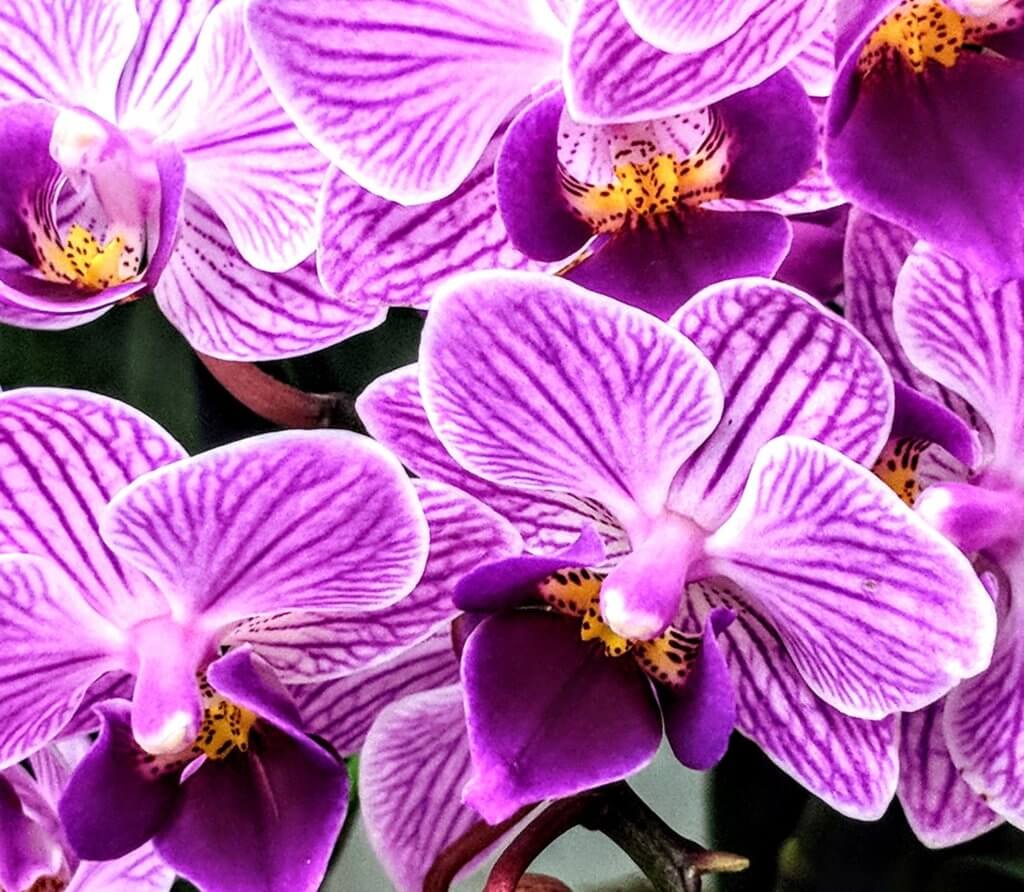
The orchid plant is the most commonly grown house plant in the world. And after seeing orchids bloom, you know why!
Also, it is one of the most popular gifts to buy parents and grandparents for birthdays and holidays!
There are over 800 types (genres) and 20,000 species of orchids. Yet, you’ll only find a dozen on them in nurseries or for sale online.
And while most gardeners feel they are challenging to grow and care for, they are not. They just require different caring.
No matter which of the ten most popular orchids you purchase, if you follow the main orchid care requirements below you’ll find your orchids will live decades and bloom more.
- Water no more than once a week
- Place your orchid in windows that face east to west
- Fertilize weekly
- Provide a humid environment
- Provide at least 6 hours of daily light
- Prune as needed
- Repot in the orchid mix when it stops blooming
10 EASY & PROVEN Caring Tips
Orchids are unlike any traditional potted plant you’ll ever see.
And learning how to care for Orchids is an art and a science.
Certain orchids called epiphytes do not grow in dirt, but rather hang by trees.
Other orchids called lithophytes do not grow in dirt, but rather on rocks.
And finally, semi-terrestrial orchids do not grow in dirt, but rather in a loamy soil.
And because there are so many types and species of orchids you cannot apply a general rule of caring to all of them.
As you review the below 10 EASY & PROVEN orchid caring tips, I am providing what specifically needs to be done for each of the 10 most popular orchids.
Following these tips will allow you to have more success more often when learning how to care for orchids.
It should be noted that if you are interested in purchasing an orchid or supplies to care for your orchid your best choice for fastest shipping at the best price is through Amazon.
Tip #1: Use the Right Orchid Mix
One of the easiest ways you can care for your orchid is by planting it into the right soil mix.
Orchid mix is much different than traditional potting mix because it does not contain soil.
Instead, orchid mix contains special media that promote healthy drainage and good airflow.
Typically, orchid mix will contain redwood or fire bark, sphagnum peat moss, rocks, sand, or even perlite.
It should be noted that each orchid will need a very specific type of orchid mix.
Most popular orchids will either need a well, draining potting orchid mix, a coarse, medium-grade fir bark, or a peat moss/perlite mix.
Below, is what I recommend using for the 10 most popular orchids that gardeners own.
- Phalaenopsis – rePotme Dark Imperial Orchid Mix
- Dendrobium – rePotme Dark Imperial Orchid Mix
- Cattelya – Sun Bulb Special Orchid Mix
- Cymbidium– rePotme Succulent Mix
- Epidendrum – rePotme Dark Imperial Orchid Mix
- Oncidium – rePotme Dark Imperial Orchid Mix
- Paphiopedilum – rePotme Succulent Mix
- Sarcochilus – Sun Bulb Special Orchid Mix
- Vanda – Sun Bulb Special Orchid Mix
- Miltonia – Sun Bulb Special Orchid Mix
Tip #2: Use THIS Pot
One of my favorite tips when learning how to care for orchids I provide everyone who wants to make caring for orchids easy is to buy the correct type of pot.
For PROVEN success, I recommend purchasing a clear pot.
The reason you want to buy a clear pot is so that you can inspect your orchid roots. Orchid root growth is the best way to determine the health of your orchid.
Also, clear pots will help you easier determine when to water your plants.
Best of all is that clear pots are easy to clean, disinfect, and reuse.
If you prefer a more decorative pot then ONLY use ceramic pots.
And when it comes to size you want to purchase the smallest pot possible that the roots can fit in. For most orchids, you buy this will be approximately 6 inches.
Tip #3. Orchids LOVE Humidity
If you want more orchid blooms then you need to have humidity.
For the ten most popular orchids, you will need to have humidity between 50% and 70%.
If you want to control the humidity for your orchids then I recommend purchasing a humidity tray.
Humidity trays allow for water to collect in the base while the plant is suspended above it, taking advantage of extra moisture.
If you want to increase humidity, I also recommend planting orchids in groups.
And finally, misting (instead of watering) will increase the humidity in the air.
If you find that you need to increase the airflow of the humidity in your house then all you need is to turn on a fan!
So how do you know if your orchids need more humidity?
Orchids need more humidity if it begins to wilt, has brown leaf edges, flower buds fall off, or flowers quickly shrivel before bloom.
Tip #4: Do NOT Overwater
Orchids’ roots like humidity, but do not like to be wet.
Orchids also do not like dry air because it will quickly wilt the roots.
And watering your orchid is the hardest part of caring for it.
What makes watering such a hard task is that each orchids’ needs vary based on its type, environment, and season.
So what is the best practice when watering your orchid?
For all of the ten most popular orchids, you will want to water your orchid once a week.
You want to water your orchid until water begins draining through the pot holes. Once this happens then stop watering.
You will know your orchid needs watered by how it looks and feels.
If your orchid is dry to the touch and has a light brown color it needs to be watered. If your orchid is moist to the touch and has a dark brown color it does not need to be watered.
Tip #5: Orchids like it hot & cold
If you want to properly care for your orchids then you want to provide it with both hot and cold temperatures.
Like the orchid mix, the temperature will vary depending on the type and species.
In general, most orchids will require temperatures between 70 and 80 degrees Fahrenheit. And others will need cool fall air around 50 degrees Fahrenheit to bloom.
For best results, keep your orchid plant on the south and east-facing windows. And if it gets too much light do not move it, put up a curtain instead.
Tip #6: Use Orchid Specific Fertilizer
Fertilizing orchids is unlike fertilizing any other houseplant.
Using your average fertilizer off the shelf will not help. Neither will fertilizer that contains urea. Orchids do not absorb urea or plant fertilizer as well as other plants because they don’t live in the soil.
Because of the above factors, you will need to purchase a fertilizer that is specific for orchids.
The best orchid fertilizer was created by Michigan State Unversity and is the best application for a majority of the ten most popular orchids.
For best results, I recommend first watering your plant then applying the fertilizer and then watering again.
For all of the most popular orchids, I recommend fertilizer a diluted application (typically 1/4 strength) weekly.
And when the orchid goes dormant you can even get away with fertilizing bi-weekly.
- Phalaenopsis –rePotme MSU Food
- Dendrobium – EarthPods Premium Food
- Cattleya – rePotme MSU Food
- Cymbidium– rePotme MSU Food
- Epidendrum – Miracle-Gro Orchid Food
- Oncidium – EarthPods Premium Food
- Paphiopedilum – Miracle-Gro Orchid Food
- Sarcochilus – Miracle-Gro Orchid Food
- Vanda – EarthPods Premium Food
- Miltonia – EarthPods Premium Food
Tip #7: Have just enough Light!
Most houseplants require quite a bit of light to grow and bloom.
Orchids is not one of them. Too much light and they won’t bloom. Too little light and they won’t bloom either.
Orchid Plants can be described as either high light and low light.
High light orchids do not require lots of light, while low light orchids require some light. Typically, all orchids will require at least 6 hours of light though.
Unlike other plants, orchids are receiving enough light if they have yellow-green foliage and stands upright.
I recommend placing your orchid by your south window. You will not want to place the orchid by the north window because it will receive too little sunlight.
And if your orchid is receiving too much sunlight during the summer you can move your plant from the inside south window into a shaded area outside.
Even if you follow these steps for the light it does not guarantee you will have success. Sometimes you need help from a grows light with fluorescent bulbs.
I recommend: Hydroplanet Grow Light
Tip #8: Repotting is critical for growth
Repotting is a critical component of caring for all plants, but is even more important for orchid growth and bloom.
How do you know when to repot your orchid?
There are two very simple ways to determine if your orchid is ready to be repotted.
You should repot your orchid when the root system begins growing through the bottom of the pot.
Never look at foliage growth though when determining if your orchid needs repotted. This can be misleading and can stunt growth or even kill your orchid.
Another great way to determine if your orchid needs repotted is in your soil mix breaks down and it looks like your pot needs more soil.
If you learn better by watching videos then you can’t find a better one than the one below:
Tip #9: Be Aware of Bugs & Bacteria!
One of the quickest ways orchids die is when they are under attack from bugs and bacteria.
Certain bugs that can infest your orchid is mealybugs, scale, and aphids.
If you notice your orchid has bugs or bacteria immediately move it away from other plants to avoid spreading the disease.
Also, you will want to spray your plant with Physan. Physan is the best fungicide on the market and will give your orchid a chance to survive.
If the Physan treatment doesn’t work as well as you would like you can also apply cinnamon and rubbing alcohol mixture to your orchid. This will help prevent further damage from bugs and bacteria.
And if all else fails I recommend visiting your local nursery to test your orchid for specific diseases and then immediately repot it.
Tip #10: After-Bloom Care
Learning how to care for orchids before it blooms is only half the work.
You will want to provide extra care and maintenance to your orchid after it blooms.
After your orchid blooms make sure you continue to water, feed, prune and repot it to help ensure the greatest chance of reblooming and growth.
Once the orchid flower dries I always recommend pruning it near the stem to help encourage future flower blooms. The below is a great tutorial on how to prune your orchid.
If your orchid blooms only once and never again there can be several reasons why this is happening.
Some of the reasons your orchid may not be blooming includes:
- Not enough sunlight
- Too much light
- Wrong temperature
- Too much or too little fertilizer
- Too small of a pot
- Wrong Season
- Too little or too much water
Caring for the 10 Most Popular Orchids
1. Phalaenopsis Orchid
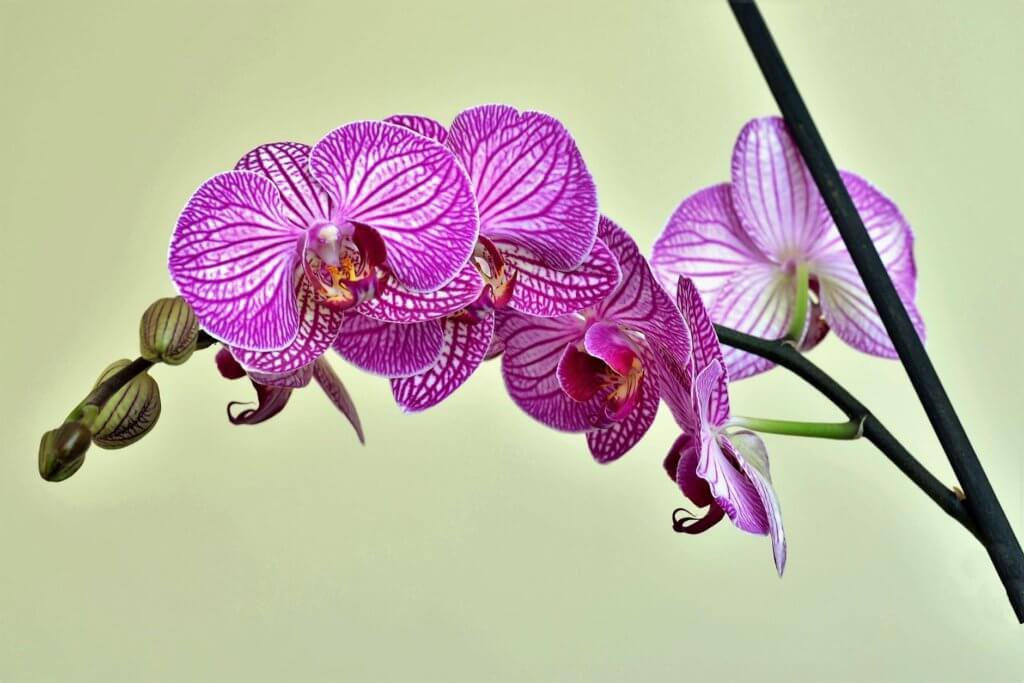
The Phalaenopsis orchid is the most common orchid on Earth.
It is also referred to as the Moth Orchid and blooms once or twice a year. What makes this orchid stand out is that the bloom can last as long as 3 months.
- Light Requirement – Medium to Bright Indirect Light
- Temperature – 68 to 85 degrees Fahrenheit. Blooms when it is closer to 68 degrees
- Water – Once a week
- Soil – Well draining potting orchid mix – rePotme Dark Imperial Orchid Mix
- Fertilizer – 1/4 quarter strength phalaenopsis fertilizer – rePotme MSU Food
2. Dendrobium Orchid
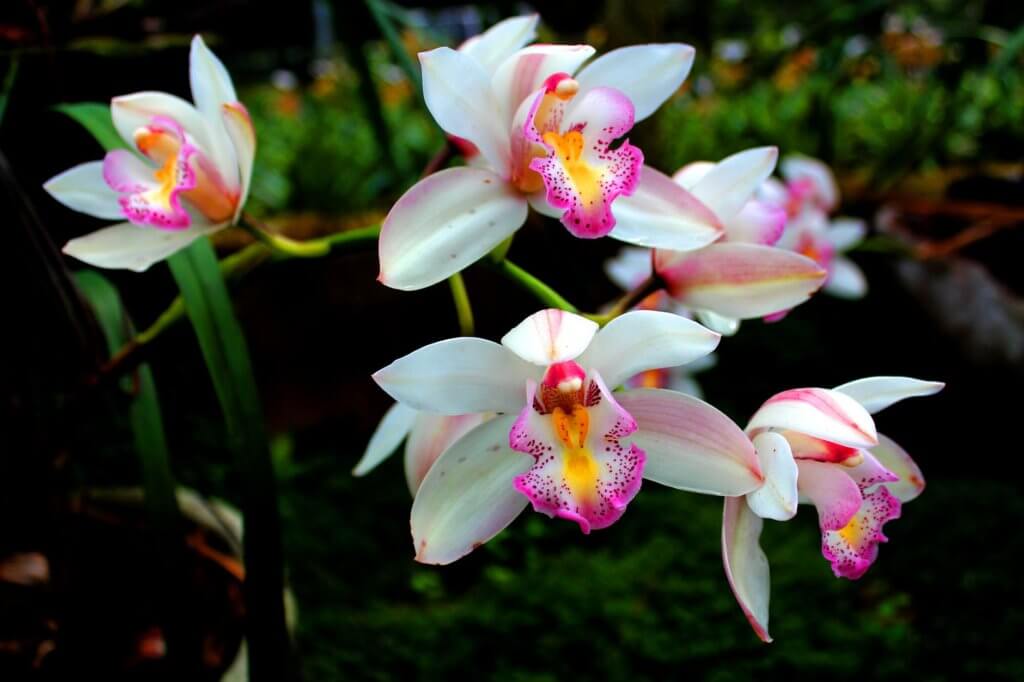
The Dendrobium orchid has some of the best bloom out of all orchids on Earth.
While the orchid blooms more beautiful than others it is tougher to grow and care for. What makes it so hard is that this orchid requires a wide range of temperature to bloom.
- Light Requirement – Morning sun and afternoon shade
- Temperature – 68 to 85 degrees farenheit. The chillier the better for bloom.
- Water – Once a week
- Soil – Well draining potting orchid mix – rePotme Dark Imperial Orchid Mix
- Fertilizer – Balance fertilizer. Stop fertilizing in the fall. – EarthPods Premium Food
3. Cattleya Orchid
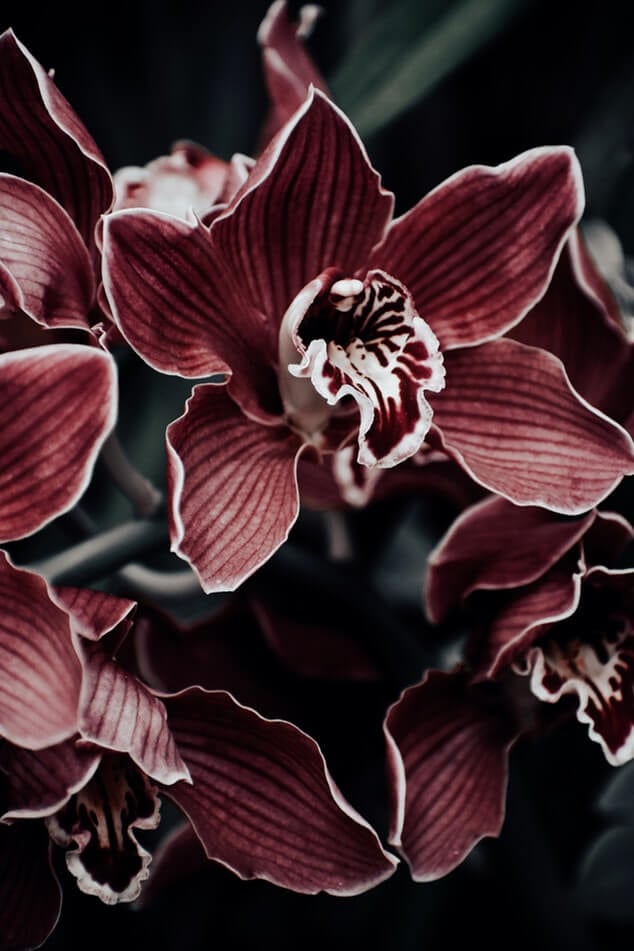
The cattleya orchid is a stunning indoor orchid that can grow almost anywhere.
When people talk about growing house orchids they are usually referring to the cattleya orchid.
If you are looking for an orchid that has a wide range of bloom types of colors then look no further.
- Light Requirement – Morning sun, afternoon shade.
- Temperature – Less than 85 degrees Fahrenheit.
- Water – Once a week
- Soil – Coarse, medium-grade fir bark – Sun Bulb Special Orchid Mix
- Fertilizer – High-Nitrogen fertilizer once a month – rePotme MSU Food
4. Cymbidium Orchid
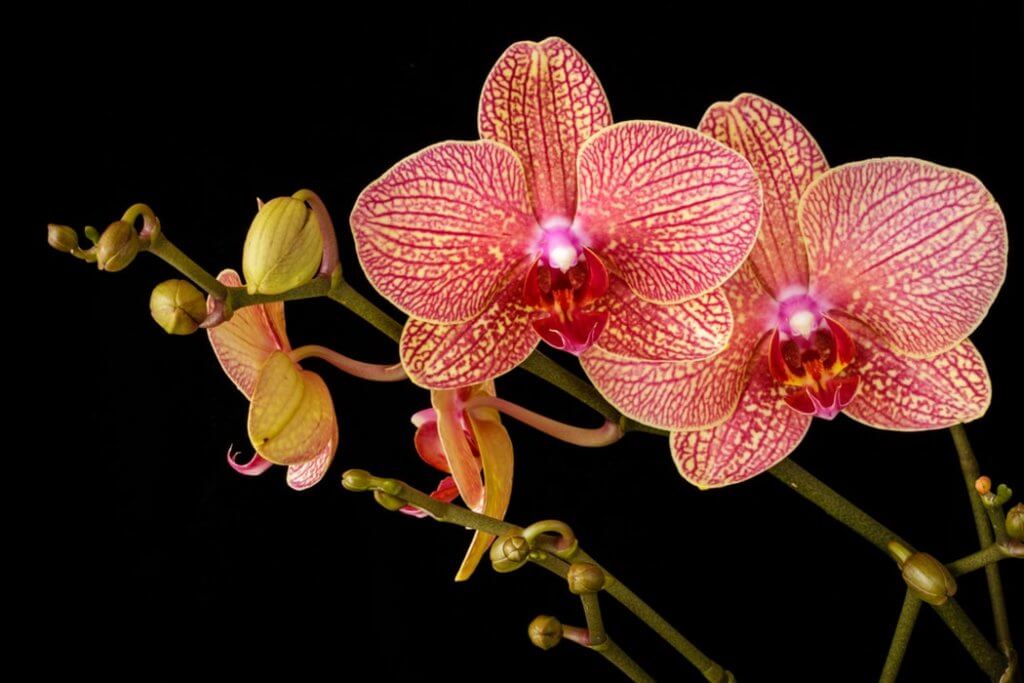
Cymbidiums are considered the show stoppers of orchids.
The Cymbidium orchid is known to produce up to 30 flowers on one spike that can last for at least one month!
And when these orchids bloom they have some of the most unique and beautiful colors you’ll ever see.
- Light Requirement – Filtered Light
- Temperature – 45-55 degrees Fahrenheit to bloom. 85 degrees when dormant.
- Water – Once a week in the morning. Bi-weekly in the winter.
- Soil – medium or fine bark mix with perlite/peat moss. rePotme Succulent Mix
- Fertilizer – Slow-release fertilizer and use when your orchid is active. rePotme MSU Food
5. Epidendrum Orchid
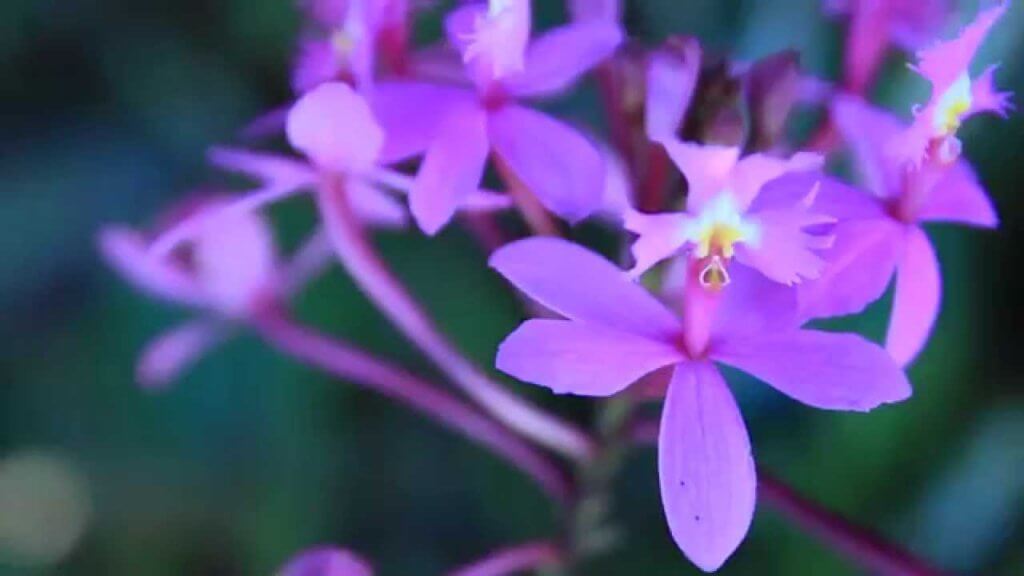
Epidendrum orchids are one of the favorite orchids among gardeners all over the world.
Epidendrums are highly fragrant orchids. But what really sets them apart is that they are ever-blooming.
You will also notice this is one of the easier orchids to care for.
- Light Requirement – Medium to bright indirect light
- Temperature – 60-90 degrees Fahrenheit.
- Water – Once every 5 days
- Soil – Orchid mix. rePotme Dark Imperial Orchid Mix
- Fertilizer – Miracle-Gro Orchid Food
6. Oncidium Orchid
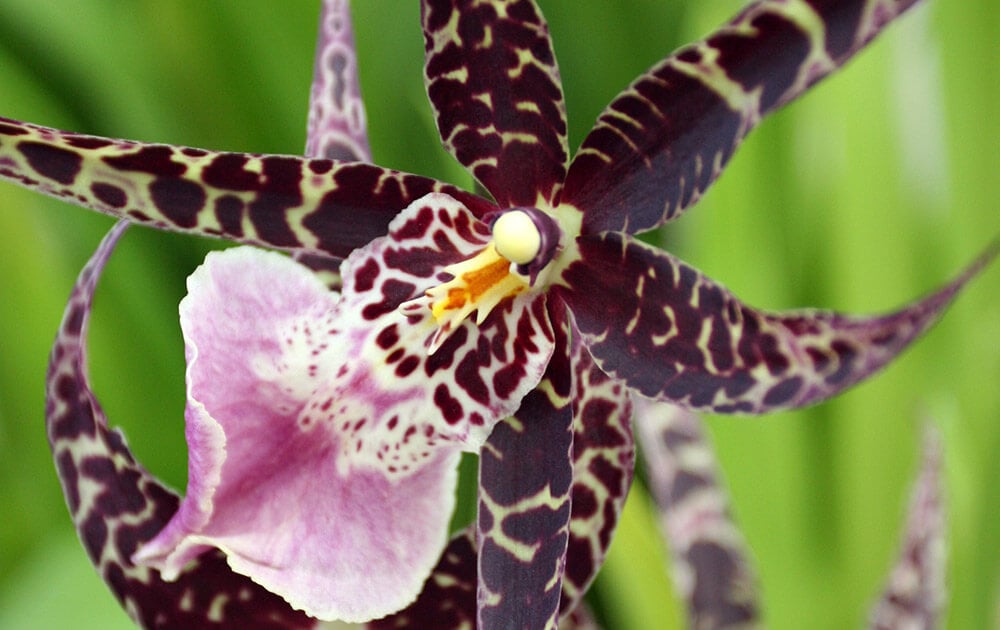
Oncidium Orchids are one of the most unique orchids you’ll ever plant.
These orchids have their roots exposed to air and hand over the edge of pots.
- Light Requirement – Morning sun and afternoon shade
- Temperature – 55-85 degrees Fahrenheit. The warmer, the better.
- Water – Does not follow a pattern. Water when the soil begins to dry.
- Soil – Orchid mix. rePotme Dark Imperial Orchid Mix
- Fertilizer – EarthPods Premium Food
7. Paphiopedilum
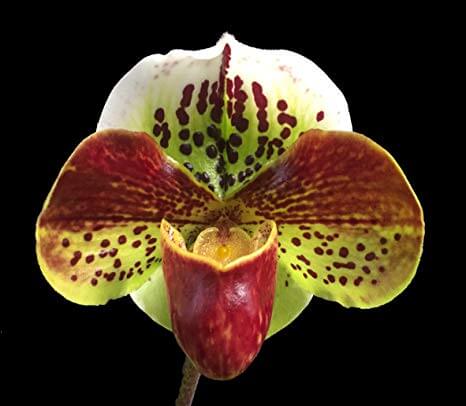
The Paphiopedilum orchid has also been called the venus slipper orchid.
This orchid has some of the most unique shapes and sizes that you’ll find in any orchid and as you can tell by the above picture also has some beautiful blooms.
- Light Requirement – Lowlight
- Temperature – 60-80 degrees Fahrenheit.
- Water – Every 5 days
- Soil – Medium or fine bark mix with perlite and peat moss. rePotme Succulent Mix
- Fertilizer – Miracle-Gro Orchid Food
8. Sarcochilus Orchid
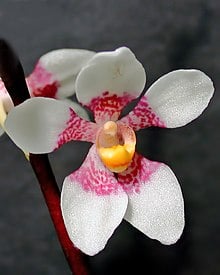
The Sarcochilus is also known as the butterfly orchid and is one of the lesser grown orchids.
What separates Sarcochilus orchids from other ones is that some of the varieties grow on rocks or leaf litter.
- Light Requirement – Low to medium light
- Temperature – Minimum 40 degrees Fahrenheit. Hotter when dormant.
- Water – Keep constantly moist
- Soil – Medium treated pine park. Sun Bulb Special Orchid Mix
- Fertilizer – Miracle-Gro Orchid Food
9. Vanda Orchid
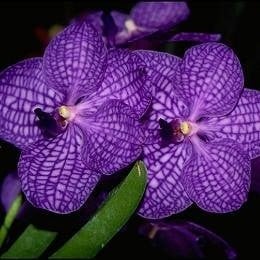
The vanda orchid is one of the most common orchids in the marketplace.
Not only is this one of the most common orchids in the marketplace, but it is the most adaptive orchids out there. This means it is perfect for beginners!
- Light Requirement – Morning sun and afternoon shade
- Temperature – Below 85 degrees Fahrenheit.
- Water – Once a week
- Soil – Medium grade mix. Sun Bulb Special Orchid Mix
- Fertilizer – EarthPods Premium Food
10. Miltona Orchid
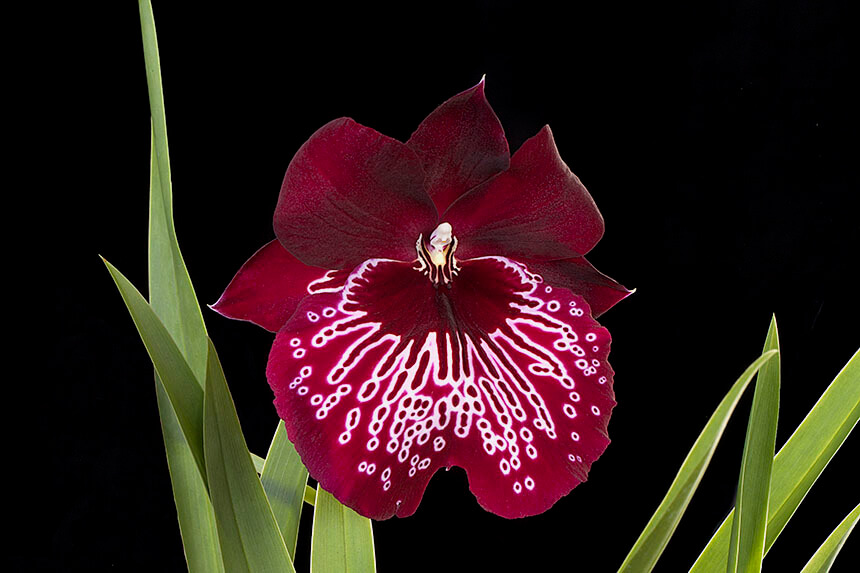
The Miltonia orchid is one of the few orchids that have long-lasting blooms that come in numerous colors at different times.
The Miltonia orchid is also one of the least known orchids among growers but should be one you consider purchasing next.
- Light Requirement – Bright indirect
- Temperature – Below 85 degrees Fahrenheit.
- Water – Once a week
- Soil – Fine Birch mix. Sun Bulb Special Orchid Mix
- Fertilizer – High-Nitrogen. EarthPods Premium Food
Conclusion
As discussed, learning how to care for orchids can be easy if you follow careful instructions.
To ensure bigger, better, and longer-lasting blooms make sure you:
- Use the right orchid mix. Each orchid will require a different mix
- Use clear pots to see the health of your orchid plant roots
- Use a humidity tray to better control humidity for your orchids
- Water once a week. Do not water more than this or else your orchid will quickly die
- Monitor temperature. Cooler for blooming and warmer for growth.
- Use orchid specific fertilizer. Normal plant fertilizer won’t help your orchid.
- More light is usually better
- Repotting your orchid is essential to root growth
- Use insecticide and fungus spray early and often
- After-bloom care is just as important as before-bloom. If you want your orchids to continue to bloom make sure you properly prune them
While these general tips are EASY & PROVEN for gardeners who want to learn how to care for orchids, every orchid is different.
Spend some extra time reviewing the ten most popular orchids to determine how to specifically learn how to care orchids.
If you like this article then I recommend reading:
50 USEFUL Plants that Attract Bees to Your Garden
101 Gardening Tips that ACTUALLY Work
25 Best Gardening Tools You CANNOT Live Without!
What is your favorite orchid to grow?
Do you have any tips for orchid caring?



Comments
Comments are closed.